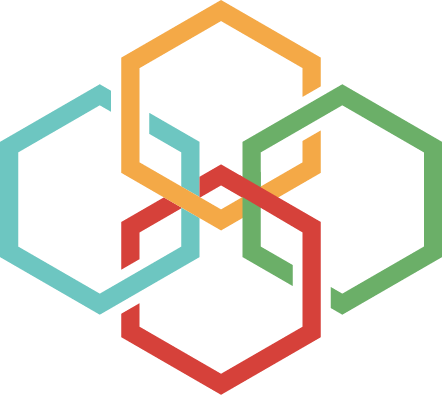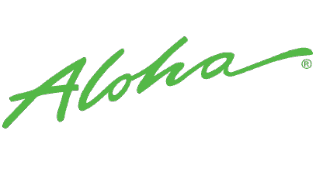There are many ways to grow your Facebook business page. There are more ways to increase the number of shoppers on your website. Most of these marketing strategies fall into two categories: organic and inorganic. Here is the beginner’s guide to increase social media reach and website traffic.
You have probably seen these terms with Facebook and Google Analytics. Facebook uses terms like “organic reach”. Google Analytics uses terms like “organic traffic”. So, what makes something organic or inorganic in digital marketing? First, we will look at the differences between organic reach and inorganic reach. Then, we will look into how to go about increasing both. Keep reading to learn how to boost sales with organic traffic or inorganic traffic.
Seamless integration, effortless payments
Keep business running smoothly. Our solutions integrate with popular programs
What Is Organic Reach and Paid Reach?
When it comes to digital marketing, there is a lot of organic things. There is organic reach on Facebook and organic traffic on Google Analytics. Maybe you have even heard of organic search on Google. So, what exactly is organic? Organic is any time a potential customer finds your company without the use of paid advertising. Organic reach on Facebook happens when a customer searches for your account. A customer liking a regular post is another example of organic reach on social media. The idea is that customers are finding you on purpose. They are interacting with your page without the use of paid advertising on social media. That sort of interaction is free. You do not pay anything for it.
The same can be seen with organic traffic on Google. Organic traffic happens when someone arrives at your website without the use of an ad. They could type your website directly into the address bar. They could also search your industry on Google and select your website from one of the search results. Both of those are examples of organic traffic.
Inorganic is the opposite. Inorganic is anything paid. When you boost a Facebook post, or run an ad, you are paying to have your post reach more people. The people you are able to reach with a paid ad is different than your followers. A few followers might interact with a boosted post. However, non-followers may also see and interact with your post.
The same is seen with inorganic traffic. If someone goes to your website through the use of a paid Facebook ad, that is inorganic traffic. The idea stays the same with a google search. A person could search for your industry, and select your website from a paid Google ad. That would also be considered inorganic traffic.
If you paid to have that person find or interact with your company, then it is considered inorganic. If a person found or interacted with your company without following an ad, then it is organic.
Improving Inorganic Reach
There is nothing wrong with inorganic reach or paid reach. Almost every company pays for some form of advertising. They might use traditional advertising like radio or tv. They may also use digital advertising like Facebook ads. For the most part, if you want to get your brand in front of others, you must advertise.
Part of the solution is just throwing more money at it. If you had an advertising budget worth millions, you could reach a whole lot more people than you currently do. The more money you pay to Facebook, the more people will see your ads. The more times you run a TV ad, the more times people are going to see it. Inorganic reach can end up being an expensive route.
There is another way to improve inorganic reach and traffic, and that is by improving your ads. Google has multiple suggestions. Here are our favorite takeaways: diversify your ad groups to target different types of customers, and create simple and enticing ads with a strong call to action.
There are many ways to improve your Facebook digital ads. Here are some key takeaways: use images that capture attention. Make sure that the idea come across in the image without there being too much text; in fact, the less text the better. Be sure to include an instant and appealing call to action for potential customers.
If you are just starting on marking and paid ads, we have a beginner’s guide for you. You can run your first digital ad with a $20 marketing budget.
Improving Organic Reach
Organic traffic can capture over 40% of your revenue. There’s no surprise businesses choose to focus on improving their chances at reaching organic leads. Believe it or not, there is actually a number of ways to do this. Organic reach is really just determined if people like your stuff. Organic reach on Facebook happens when people like your content enough to interact or share it on their page. The more people that interact organically, the more people will see it. The same thing happens with Google. If people seem to like your website when searching for something, Google will list it higher on the search results. If Google thinks that your website has some interesting and helpful information on a subject, they will list it higher on the search results. Being listed higher on the search results is free.
One common term associated with organic reach is SEO. Organic traffic is sometimes referred to as natural SEO. You might be wondering what SEO is or why SEO is important for your small business. SEO stands for Search Engine Optimization. The idea is to optimize your website so that search engines like it more. There are a number of ways to do that. You can make more content like blogs, improve your use of keywords in text, or even make your website faster. You will not always know how many SEO keywords you should use, or what 2020 SEO tips there are. Sometimes it can be sort of a guess and check process. This route can end up being a lot of work.
We get that sometimes paid advertising sounds better, especially if it is outsourced. You might still be wondering why SEO is important for your online success. Ultimately, SEO and organic reach leads to more affordable website traffic. Minus the cost of man-hours, that traffic is free. The results are longer lasting. When you search your industry on Google, your company probably is not the first result. With improved SEO and organic traffic, it could be the first or third result on the list. Wouldn’t that be nice? Once you improve organic search, potential customers will just keep going to your website.
Hopefully with this guide you now understand the difference between organic reach and inorganic reach. Whether you want to increase Facebook organic reach, or organic traffic to your website, we hope you found this information helpful. You can always throw more money at paid advertising. However, if low-cost structure is important to you, then organic reach will always be better. For most companies, a mixture of organic and inorganic is best. They are always trying to capture new customers with paid advertising while simultaneously improving their organic material.
Renee McBride










